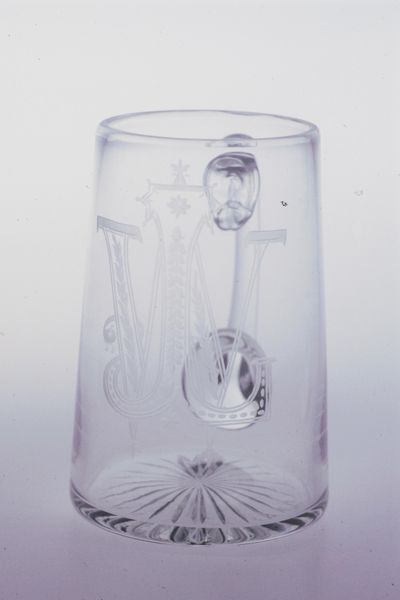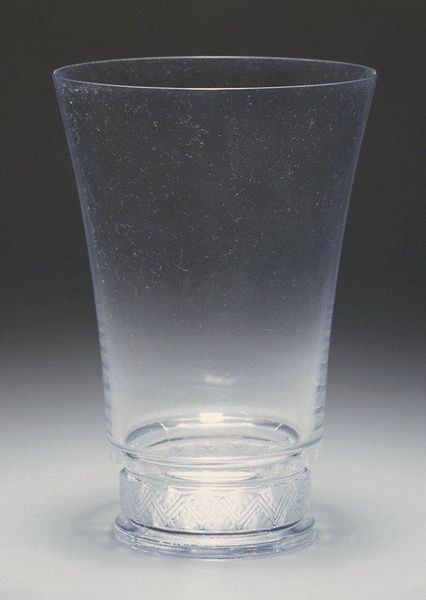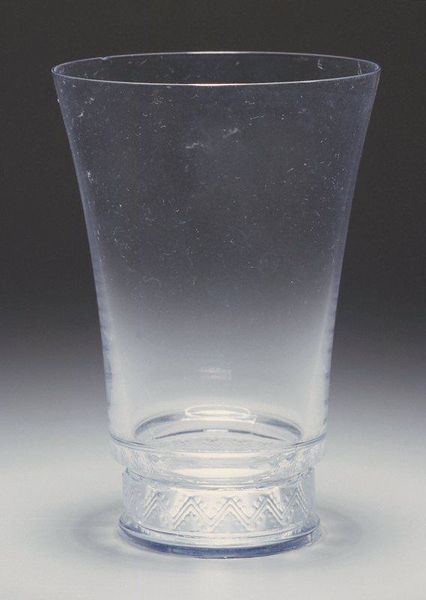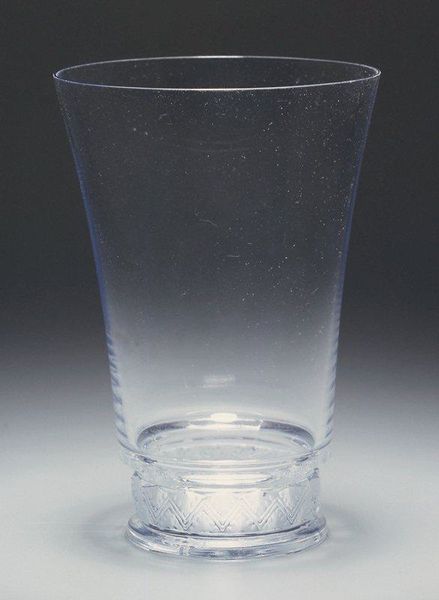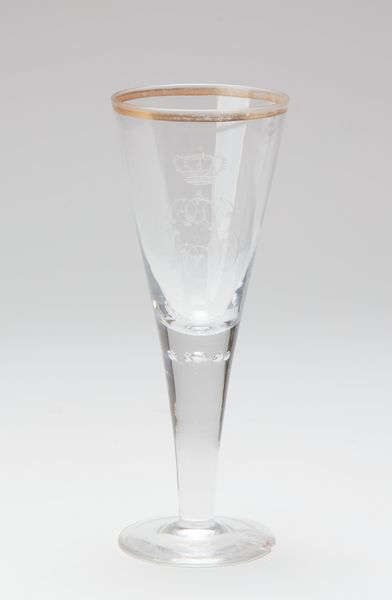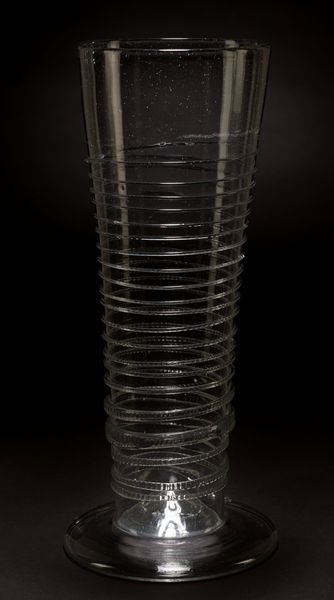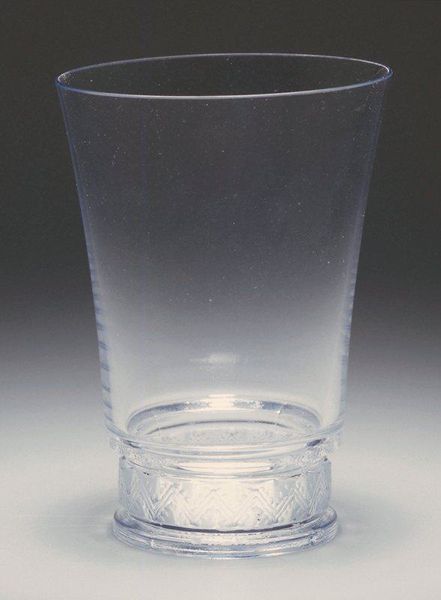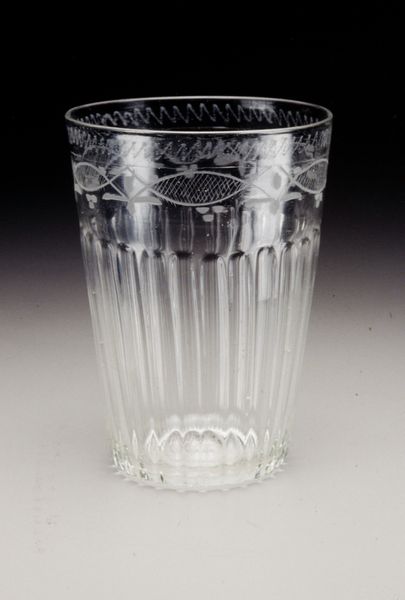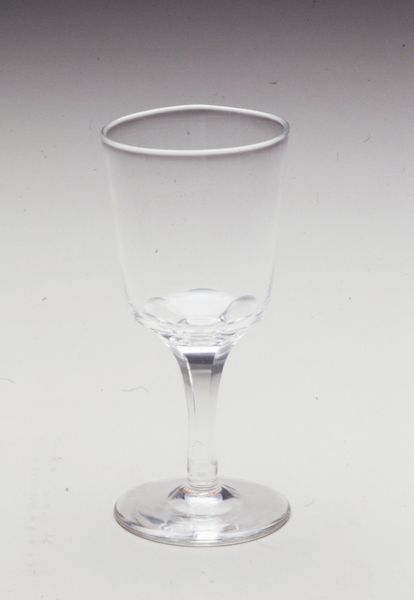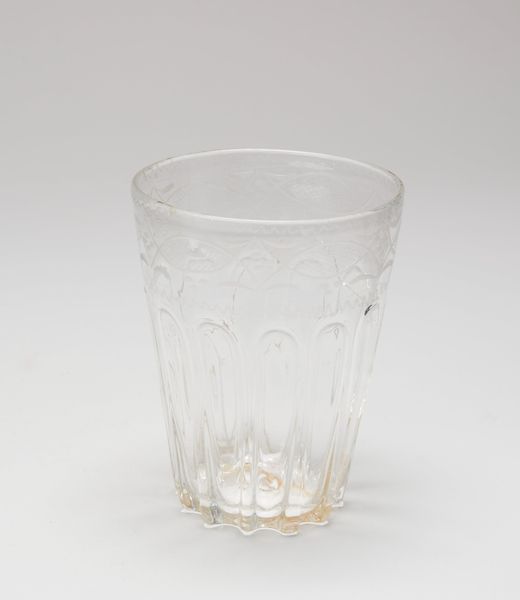
glass, sculpture
#
medieval
#
glass
#
sculpture
Dimensions: 8 13/16 × 3 11/16 × 3 11/16 in. (22.38 × 9.37 × 9.37 cm)
Copyright: Public Domain
This is a 'pasglas', or 'pass glass', made anonymously, probably somewhere in Europe. It’s made of simple soda-lime glass, tinted a deep forest green. The term 'pass glass' comes from the practice of passing the glass around a table, with each person drinking to a pre-determined level, marked by the decorative horizontal trails. These were applied as molten threads, wrapped around the body of the vessel. It’s a very social object, embodying customs of communal drinking. It shows an interesting negotiation between standardization and artistry, because the trails and the foot give this particular glass some individual character. Yet glassmaking in this era depended on efficient production. The blower would have been part of a complex division of labor, and would need to work quickly. So even though it's unsigned, this 'pasglas' tells us a great deal about the culture of its making. It bridges the gap between standardized production and individual expression.
Comments
minneapolisinstituteofart almost 2 years ago
⋮
Pasglazen were used for drinking games in 17th-century Holland. Participants had to drink exactly from one horizontal mark to the next. In case they drank too much, they had to drink down to the next mark, and so forth. Of course, the more inebriated one became, the more difficult it was to precisely reach the next mark—thus precipitating even more imbibing. Because the users of such glasses frequently broke them in the course of their drunken revelries, only a small number of them have come down to us. Their inclusion in still life paintings of the time, however, show just how popular they were.
Join the conversation
Join millions of artists and users on Artera today and experience the ultimate creative platform.
